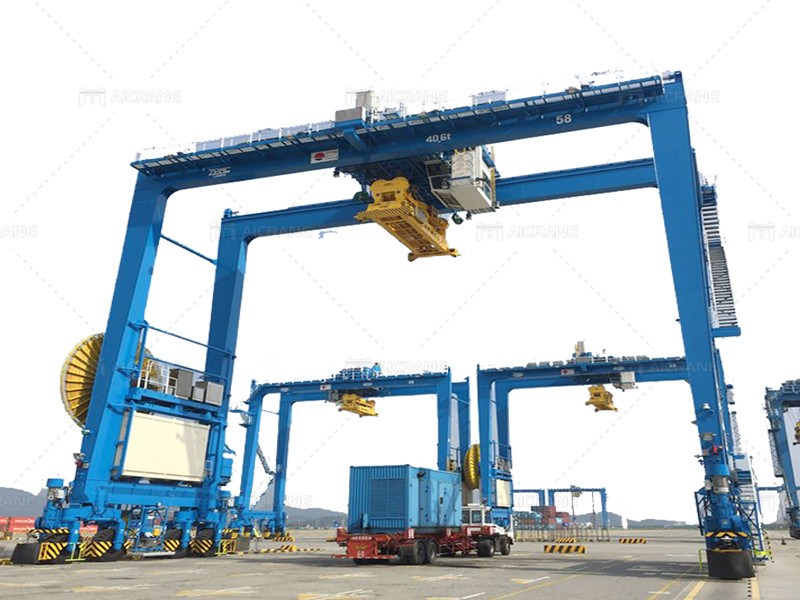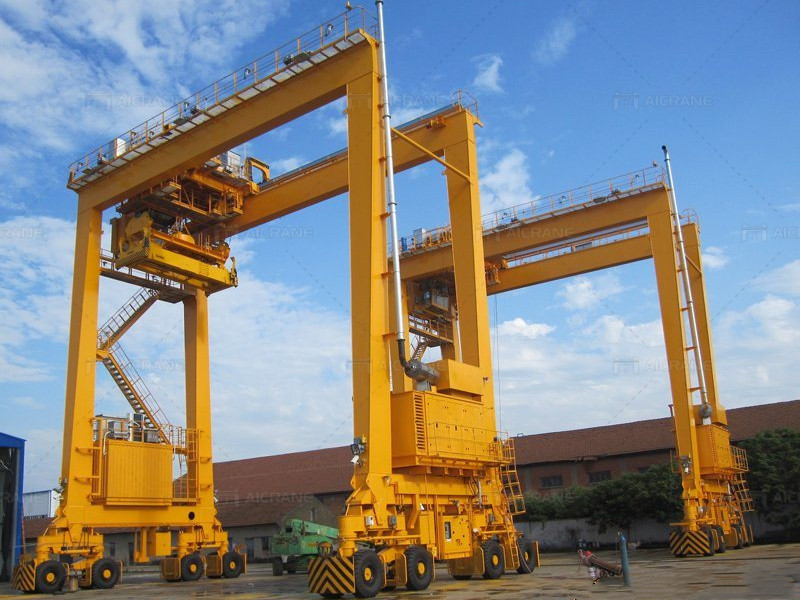When looking to purchase a container crane for sale, whether for a port, terminal, or industrial application, it’s essential to focus on quality, performance, and reliability. A high-quality container crane is a crucial investment that will improve your cargo handling efficiency, reduce operating costs, and enhance safety. With various manufacturers offering different models and specifications, finding the right crane that meets your needs can be challenging. This guide will walk you through the key factors to consider when buying a container crane to ensure you acquire a top-notch piece of equipment.

Understand the Types of Container Cranes
Before beginning the search for a container crane for sale, it’s vital to understand the different types of container cranes available and their respective applications. The main categories include:
Ship-to-Shore (STS) Cranes: These are massive cranes used to load and unload containers from ships. They have high lifting capacities and long outreach, making them ideal for large container vessels.
Rail Mounted Gantry (RMG) Cranes: RMG cranes are used in container yards for stacking and moving containers. They run on rails and are perfect for high-density stacking.
Rubber-Tyred Gantry (RTG) Cranes: These cranes are mobile and operate on rubber tires, providing greater flexibility for container handling within a yard.
Straddle Carriers: Although technically not cranes, these mobile machines are used to move containers around the yard and stack them at lower heights compared to gantry cranes.
By understanding which type of container crane suits your operation, you can better target your search for the right model.
Assess Your Operational Needs
A high-quality container crane for sale should meet the specific requirements of your operation. Consider the following factors:
Lifting Capacity: Cranes come in various lifting capacities, depending on the size and weight of the containers being handled. If you are handling standard 20-foot or 40-foot containers, ensure the crane has sufficient capacity. Heavy-duty applications may require cranes capable of lifting over 40 tons.
Span and Lifting Height: The span refers to the width the crane can cover, and the lifting height indicates how high the crane can lift containers. Depending on your yard layout and stacking needs, choose a crane with the appropriate span and lifting height.
Load Cycle Speed: Efficiency is critical in port operations, where containers need to be loaded and unloaded quickly. Check the crane’s load cycle speed, which measures how fast it can lift, move, and lower containers. A faster load cycle translates to better productivity.
Mobility vs. Fixed Cranes: Decide whether you need a rail-mounted crane for fixed applications or a mobile crane such as an RTG, which can move containers within a yard.
Look for Advanced Technology and Features
A high-quality container crane will come with modern technology and features that enhance performance, safety, and ease of operation. When evaluating a container crane for sale, consider the following technological advancements:
Automation and Remote Control: Some container cranes come with automation features that reduce human intervention and increase precision in container handling. Remote control operations allow operators to manage cranes from a distance, enhancing safety.
Anti-Sway Systems: Container sway during lifting and transportation can reduce efficiency and increase the risk of accidents. High-quality cranes often feature anti-sway technology, which minimizes sway and ensures the precise positioning of containers.
Load Monitoring Systems: These systems track the load being lifted and ensure it is within the crane’s safe operating limits. This prevents overloading, reduces wear and tear on the crane, and enhances safety.
Energy Efficiency Features: Ports and terminals can reduce operating costs by choosing cranes with energy-saving technology, such as regenerative braking systems and eco-efficient motors. Energy-efficient cranes not only lower electricity costs but also reduce the environmental impact.
Evaluate the Manufacturer’s Reputation
When investing in a container crane for sale, it is essential to buy from a reputable manufacturer known for producing durable, reliable, and efficient cranes. Here are some tips for evaluating a manufacturer’s reputation:
Industry Experience: Choose a manufacturer like Aicrane with extensive experience in designing and building container cranes. Long-established manufacturers are likely to have a proven track record of quality.
Customer Reviews and Testimonials: Research customer reviews and testimonials to get an idea of the performance and reliability of the cranes from specific manufacturers. Positive feedback from existing customers is a strong indicator of quality.
After-Sales Support: A high-quality crane manufacturer should offer excellent after-sales support, including installation, maintenance, and spare parts supply. Ensure that the manufacturer provides comprehensive customer service and support to keep your crane in optimal working condition.
Certifications and Standards: Verify that the cranes comply with international standards such as ISO and CE certifications. These certifications indicate that the crane meets safety, quality, and performance standards.

Consider the Total Cost of Ownership
While the initial price of a container crane for sale is important, it is crucial to consider the total cost of ownership (TCO) over the crane’s lifespan. This includes maintenance costs, energy consumption, spare parts, and operational efficiency. A cheaper crane may require more frequent repairs or consume more energy, leading to higher operating costs in the long run.
Key cost considerations include:
Initial Purchase Price: Compare quotes from different manufacturers, ensuring you get the best value for the features offered.
Energy Efficiency: Opt for energy-efficient cranes to reduce operational costs over time.
Maintenance Costs: Regular maintenance is necessary to keep the crane running smoothly. Choose a crane with easy-to-replace components and access to affordable spare parts.
Durability and Lifespan: Invest in a crane built from high-quality materials that can withstand harsh port environments and last for years without major repairs.
Inspect the Crane Before Purchase
Before finalizing the purchase of a container crane for sale, it’s crucial to inspect the crane thoroughly. Whether buying new or used, ensure the crane is in optimal condition and meets your specifications. If possible, conduct a site visit or request detailed videos and documentation that demonstrate the crane’s performance.
For used cranes, check for signs of wear and tear, rust, and corrosion, as these can affect the crane’s longevity. It is also a good idea to request a maintenance history report to understand the crane’s condition and any potential issues.
Negotiate Terms and Financing Options
Once you have identified a high-quality container crane for sale that meets your needs, negotiate the terms of the sale. Some manufacturers offer flexible financing options, leasing arrangements, or trade-ins for older equipment. Take advantage of these opportunities to reduce upfront costs or spread the payments over time.
Discuss warranties, after-sales service agreements, and delivery timelines with the seller. A comprehensive warranty can save you significant repair costs, while timely delivery is essential for minimizing disruptions to your operations.
Acquiring a high-quality container crane for sale requires careful consideration of your operational needs, the type of crane, technological advancements, and the manufacturer’s reputation. By evaluating the total cost of ownership, inspecting the crane thoroughly, and negotiating favorable terms, you can ensure that your investment delivers long-term value and enhances the efficiency of your port or terminal operations.